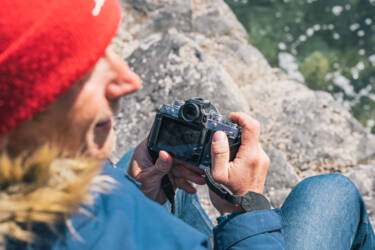Why shoot RAW?
What’s the difference between RAW files and JPEGs and which is best?
Cameras tend to shoot in two different formats, which can be selected in the settings – JPEG and RAW.
Every time you capture an image on the camera’s sensor you record digital data. A JPEG file compresses that data and some basic editing is automatically done in the camera.
For added creativity, shoot in RAW
RAW files are just that – raw (in fact, even though it’s written in capital letters, RAW doesn’t stand for anything, it just means unprocessed). A RAW file stores all the data on the image from the camera’s sensor, and more data means a greater ability to edit and tweak your images.
Unlike JPEGs, which are universal, there is no standard format for RAW files. Nikon’s format is called NEF (Nikon Electronic Format). There’s nothing wrong with shooting JPEGS of course. It’s a universal format, the camera does a lot of editing for you, the files are smaller, so storage isn’t an issue, and the compression means images are web-friendly straight from the camera. Lots to love.
But if you want to delve a little deeper, expand your creativity in photography and create the exact images you want, shooting RAW gives you complete control over your final output.
Nikon Team

Capture greater colour
Since editing is part and parcel of being a photographer, shooting RAW from the start can be a good idea, since you can learn about both your camera and your editing software at the same time. Those new to RAW sometimes look at the images and feel a little disheartened. They might look flatter compared to the JPEGs that were previously being shot. Don’t worry! This is because the JPEG has already been manipulated in the camera to set things such as White Balance and contrast. RAW files might look flat to you at the start, but there is so much more you can do with them to create stunning images. A JPEG captures images in 8-bit format, which means it can utilise up to 16 million shades of colour, which sounds a lot until you realise that RAW files, which are either 12 or 14-bit depending on your camera, can store 68 billion to 4.3 trillion shades. Shooting RAW also means having access to so much more data in light and shade and well as colour, so you can select areas of an image and expose details in shadows and lessen highlights, enabling you to finely balance the finished shot.

RAW files also offer much more opportunity to rescue an image because of all this extra information. For example, the RAW file of a severely under- or overexposed shot can often be rescued in editing software because all the data is there, whereas a JPEG, with much less data to work with, cannot.
Another bonus in editing RAW files (especially when you are starting out) is that the file itself is untouched. Nothing is irreversible in the editing process and, when you output your final image (often as a TIFF file), the original RAW file stays in your library, to be edited again and again should you wish to.
With Nikon, it’s easy to get started editing RAW files with Nikon NX Studio, a free, fully featured, pro-grade editing package. Check it out here.
Get inspired
Featured Products
Discover more mirrorless
DSLR vs mirrorless cameras: Why go mirrorless?
What is an electronic viewfinder?

Unleash your creativity













![Electronic Viewfinder Image [1] with exposure 1 in jpeg](/globalassets/digizuite/175766-en-z5_viewfinder_exposure_e_1_0.jpg/OptimizelyPhone)
